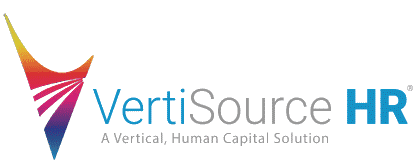
In 2005, a Texas masonry business hired and utilized several subcontractors to perform the labor necessary on behalf of the business. For the tax years 2005-2008, the business owner had filed Form 1099 to report the payments made to the subcontractors, but several of those 1099s filed lacked the required Taxpayer Identification (“TIN”) numbers.
Pursuant to the Internal Revenue Code, because the business owner’s Form 1099s did not contain the required TIN number, the owner should have backup withheld each payment made to subcontractors. Aside from failing to do so, the owner also failed to file the requisite Form 945 indicating the backup withheld was conducted.
For more than three years after the business owner’s filing in 2008, the IRS assessed approximately $1.2 million against the owner as he failed to backup withhold for the 2005-2008 tax years. Although the owner attempted to dispute the IRS’s assessment by citing a three-year statute of limitations, the federal court ruled in favor of the IRS. Because the owner failed to file his 1099s with the required TIN numbers, to include failing to file the Form 945 and backup withhold, the court cited that the statute of limitations had actually stayed open.
Lessons Learned
Because the business owner failed to backup withhold on his payments to his subcontractors, the owner became liable for 100% of the amount that should have been withheld, plus IRS fines and penalties. Instead, the owner had claimed deductions for the business’ subcontractor expenses for income taxes. In order for the owner to be able to claim these deductions, the owner needed to file Schedule C and Form 1099—both of which the owner attached to each Form 1040.
Understanding business owners generally do not have to withhold or pay taxes on payments to independent contractors, there are some circumstances, specified in the statute, under which owners must conduct backup withholding. Specifically, when an owner pays a contractor who has failed to provide a certified TIN, or if the IRS has notified the business owner that the TIN furnished by the contractor to be incorrect. If either of these two stipulations exist, then the owner must deduct backup withholding from the contractor’s pay so that it may be paid to the IRS via Form 945.
For independent contractors who have failed to provide a certified TIN it is incumbent upon the business owner to backup withhold at a rate of 24%. To certify a TIN, the contractor must complete a Form W-9. The Form W-9 is used to record the tax and financial information of a contractor to describe the contractor’s business, along with its identifying TIN so that the business which employs the contractor may report accurate information.
Business owners should then use the independent contractor’s supplied Form W-9 to complete their Form 1099-NEC (formally the 1099-MISC), though it may be good practice for the owner to verify the TIN. Owners may easily accomplish this by using the IRS’s “On-Line Taxpayer Identification (TIN) Matching Program,” a free web-based tool offered by the IRS to verify TINs subject to backup withholding. The program allows a participant to check the TIN furnished by the contractor against the name/TIN combination contained in the IRS database prior to filing an information return. Business owners may access this helpful tool via https://www.irs.gov/e-services.
Independent contractors may also be subject to backup withholding if upon notification from the IRS the contractor had failed to provide the correct TIN, or they did not report (or underreported) dividend, interest, or patronage dividend income to the IRS. Other types of payments subject to backup withholding may include rents, royalty payments, profits, commissions, fees, and other payment for work as an independent contractor.
We understand the navigation between employee and independent contractor classifications can be difficult. It is our hope this memorandum will provide valuable guidance to help business owners avoid the misclassification of their employees and independent contractors to avoid such penalties, risks, and consequences. If at any point in the process you require additional information or need support, please do not hesitate to reach out to us.
We are happy to help!
References:
https://calawyers.org/business-law/matter-of-quezada-982-f-3d-931-931-33-5th-cir-2020/


